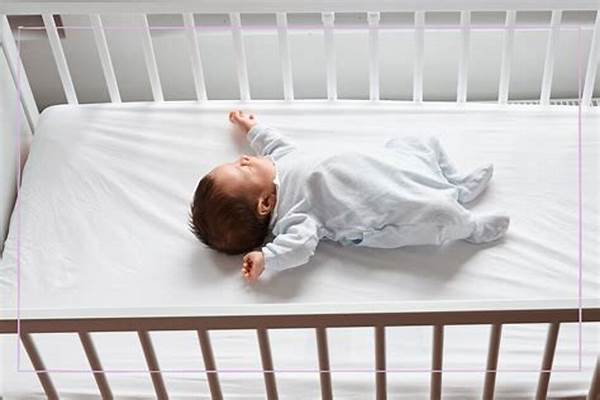In the heart of every household with a newborn, active sleep baby behavior can seem like a mystery wrapped in a conundrum. Imagine this: the soft, rhythmic rise and fall of your baby’s chest as they drift into slumber accompanied by twitches, fluttering eyelids, and occasional smiles. Ah, the serene beauty of a sleeping baby—that is, until the confused parent frantically Googles “why my baby kicks in their sleep?” Here lies the captivating universe of active sleep, or REM sleep, that occupies a significant portion of your little one’s rest. Just when you think you understand your baby’s sleep patterns, they throw you for a loop, illustrating the curious, enigmatic dance of active sleep baby behavior.
Read More : Baby Sleep Position
You might wonder: what’s so special about this so-called active sleep? Why should it pique your interest? Active sleep is vital for babies because it plays a crucial role in their cognitive development—stimulating their growing brains, aiding memory, processing emotions, and supporting learning. As newborns spend approximately 50% of their sleep in the REM stage, you’d think they’d be more rested than we are. However, understanding the nuances of active sleep could reshape your approach to parenting.
Understanding Active Sleep Baby Patterns
The magic of active sleep becomes apparent when you realize that it’s a phase packed with developmental milestones. Picture this: your baby, snug in their cradle, begins to twitch—a tiny finger flicks here, a small kick there. These are your child’s neural pathways navigating their complex, fascinating job of mapping out their world. It’s like their brain is holding a mini circuit training while they peacefully rest. Cute, right? And entirely essential for development.
Fear not the twitches and sighs. Those spontaneous movements are signs of a busy little brain thriving. Babies aren’t just ‘resting’ during REM—they’re repairing, growing, and preparing to charm you with new moves like babbling, giggling, and, soon enough, walking!
Benefits of Understanding Active Sleep
Active sleep, much like a comedy sketch, is full of surprises for new parents. You might chuckle watching your baby grimacing in slumber or wonder what dream could provoke such an innocent face to purse their lips in thought. Beyond the charm and amusement, witnessing active sleep gives insight into the development process itself. Thus, informed parents can better foster environments conducive to healthy sleep routines for their children.
From lovingly amusing to almost spiritual, the active sleep baby phase is a magical experience when comprehended. Embrace the rhythm and hum of the nights that offer you glimpses into the lively, vibrant life of a child’s dreamland. For when you acknowledge these phases, you see your baby not as a mystery, but as a small, beautiful creature growing each moment.
Promoting Healthy Sleep Habits
To aid your baby’s active sleep habits and your own peace of mind, consider investing in educational resources or expert consultations. There are various sleep consultants and baby products that cater specifically to understanding and improving baby sleep. It’s all about discovering the methods that resonate with you and your baby—whether it’s the gentle sway of a cradle, a melodic lullaby, or the comforting goodness of a sleep coach’s advice. So, dive into that delightful journey of discovery with your active sleep baby, and cherish every dreamy flutter.
—
The Science Behind Active Sleep Baby
Active sleep, or rapid eye movement sleep, is as fascinating as it sounds—much more than just a developmental phase. Conclusive research in infant sleep science suggests active sleep is instrumental for brain maturation. It’s during these periods that brain development booms, which means figuring out these mysterious sleep stages is crucial.
Observations and Implications
Experts in pediatric neurology have noted that infants display cycles of active sleep which are different from adults. For example, a baby might appear restless with sudden jerks or facial twitches. While these actions might seem alarming to new parents, they are entirely normal signs of an active sleep baby. This seemingly chaotic movement corresponds with brain waves signifying intense cognitive activity.
The research also highlights the importance of a serene environment during such sleep phases. Babies, despite their knack of sleeping anywhere, are quite sensitive to disturbances. Promoting an environment that supports their active sleep facilitates healthy growth and happiness.
What Parents Say
For many parents, witnessing their baby’s active sleep is both amusing and heartwarming. Jane from New York says, “Watching my little girl twitch and smile in her sleep makes every sleepless night worth it.” Parents often share stories of feeling connected with their children during these instances, expressing how understanding active sleep makes them more attuned to their baby’s needs.
By recognizing and treasuring the active sleep baby stage, you not only support your child’s development but create an enriching bond grounded in empathy and wonder. So, take that leap into the intricate world of infant sleep, fully armed with the right knowledge to enhance your baby’s early years.
—
Key Points About Active Sleep Baby
Discover the following crucial aspects of active sleep in babies:
In conclusion, observing and understanding the active sleep baby phenomena will enhance not just your baby’s growth but also deepen your appreciation for those precious slumber moments. So remember, when the going gets puzzling, a gentle embrace and continued observation during sleep can transform challenges into fulfilling experiences.
